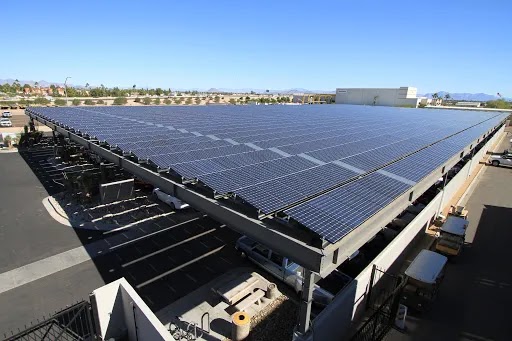Maximising financial attractiveness: How to size your rooftop solar system
- By user

In today’s age of increasing energy expenses and heightened environmental awareness, more consumers, including commercial and industrial (C&I) entities and homeowners, are increasingly adopting solar power as a practical solution. Installing a rooftop solar system not only reduces electricity bills but also contributes to a sustainable future. However, determining the right size for your solar system requires careful consideration of several factors to ensure it meets your energy needs efficiently and economically.
Assess Your Energy Needs
The first step in sizing your rooftop solar system is to assess your current energy consumption. Understanding how much electricity use on a daily, monthly, and yearly basis provides a baseline for determining the appropriate size of your solar installation. Start by examining your electricity bills to track your usage patterns and identify peak consumption periods in a year.
It’s essential to consider the energy ratings of your appliances as well. Appliances vary widely in their energy efficiency, and replacing older, energy-guzzling models with newer, more efficient ones can significantly impact your overall electricity demand. Calculating the wattage and hours of operation for each appliance helps in estimating the total energy consumption that your solar system will need to offset.
Define Your Purpose
People choose to install solar panels for various reasons, including reducing electricity costs, power outages, decreasing dependence on fossil fuels, and contributing to environmental sustainability. Clearly defining your goals will guide you in designing a solar system that aligns with your objectives. For many consumers, the primary motivation is financial savings through reduced electricity bills and emission saving.
Key Considerations: Maximizing Financial Attractiveness
One of the critical aspects of financial attractiveness in solar installations is maximizing self-consumption of the generated energy. Self-consumption refers to using the electricity generated by your solar panels directly on your premises, rather than exporting it back to the grid. This is financially advantageous because it reduces the amount of electricity you need to purchase from your utility provider, especially during peak rate periods.
Designing your solar system to optimize self-consumption involves several strategies:
Load Matching:
Size your solar system to closely match the energy demand pattern of your premises. This can be achieved through a combination of system sizing and energy management practices.
Storage Solutions:
Consider incorporating energy storage solutions, such as batteries, to store excess energy generated during the day for use during peak evening hours when solar generation is lower or during power outages.
Time-of-Use Tariffs:
If your utility offers time-of-use (TOU) tariffs where electricity costs vary throughout the day, strategically using your solar-generated electricity during peak rate periods can yield substantial savings.
Grid Interaction:
Depending on your location and utility policies, explore options for net metering or feed-in tariffs, which allow you to export excess electricity to the grid in exchange for credits or payments.
Maximizing self-consumption enhances the financial viability of your solar investment facilitating faster payback and higher return on investment.
Understand the Limitations: Tangible and Intangible
Before proceeding with your solar installation, it’s crucial to acknowledge and address potential limitations:
Tangible Constraints:
Evaluate your roof’s size, orientation, and shading to determine the maximum solar capacity it can accommodate. A south-facing roof with minimal shading typically yields the highest solar output.
Intangible Constraints:
Consider regulatory policies, local building codes, homeowner association rules, and available financing options. Finding reputable solar installers with a proven track record ensures the quality and reliability of your solar system.
Conclusion
Choosing to install a rooftop solar system is a significant decision that requires careful planning and consideration of various factors. By accurately assessing your energy needs, defining your objectives, and maximizing the financial attractiveness through optimal self-consumption strategies, you can reap the full benefits of solar energy. Platforms like Solsavi provide valuable resources and connections to trusted installers, simplifying the process and ensuring a seamless transition to clean, renewable energy.
In summary, sizing your rooftop solar system involves a blend of technical analysis and strategic planning aimed at achieving self-sufficiency, cost savings, and environmental stewardship.
